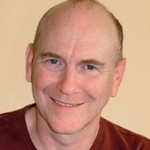Balloon boss Simon Forse
Engineering is as crucial in hot-air balloon design as anywhere else in aviation, says Simon Forse.
The world of aerospace moves fast. It uses the highest of high technology to propel people at dizzying velocities. But the roots of aerospace are slower and come from the tranquil, almost sedate drift of a hot-air balloon.
However, even here, technology moves on. Back in 1783, the Montgolfier Brothers’ waxed-paper construction was held aloft by burning straw; today’s balloons are made from technical fabrics and inflated with propane. And the role of the engineer is as crucial here as anywhere else in the aviation industry.

Simon Forse, chief engineer and managing director of Lindstrand Hot Air Balloons, said: ‘We’re one of the very few aircraft manufacturers left in this country to hold full manufacture and design approval from the European Aviation Safety Agency. We design and build standard balloons and special shapes for promotional purposes, and those are essentially one-off aircraft with all the type approval and data that entails.’
Register now to continue reading
Thanks for visiting The Engineer. You’ve now reached your monthly limit of premium content. Register for free to unlock unlimited access to all of our premium content, as well as the latest technology news, industry opinion and special reports.
Benefits of registering
-
In-depth insights and coverage of key emerging trends
-
Unrestricted access to special reports throughout the year
-
Daily technology news delivered straight to your inbox










Water Sector Talent Exodus Could Cripple The Sector
Well let´s do a little experiment. My last (10.4.25) half-yearly water/waste water bill from Severn Trent was £98.29. How much does not-for-profit Dŵr...